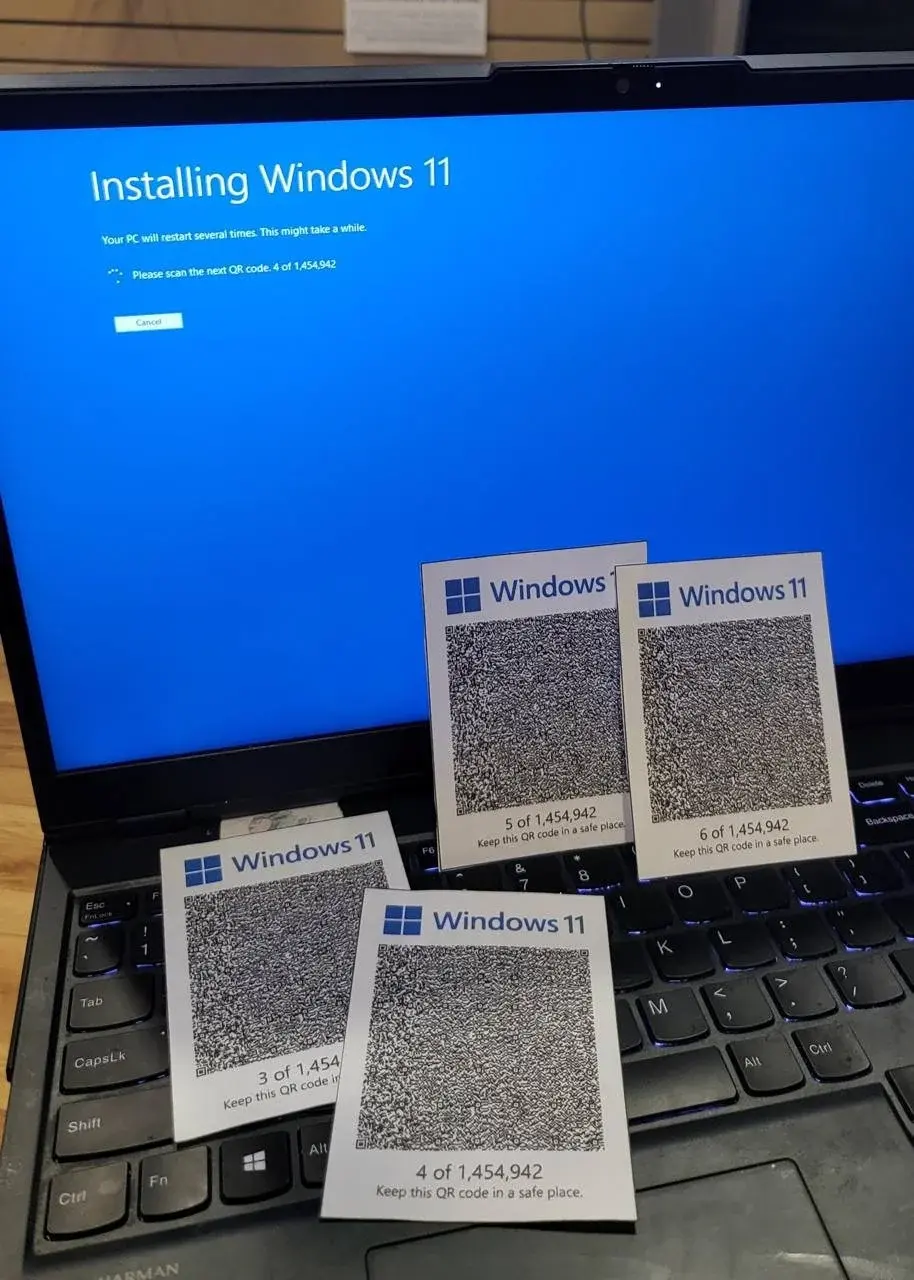this post was submitted on 27 Aug 2024
540 points (99.6% liked)
196
16484 readers
1668 users here now
Be sure to follow the rule before you head out.
Rule: You must post before you leave.
founded 1 year ago
MODERATORS
you are viewing a single comment's thread
view the rest of the comments
view the rest of the comments

KolibriOS, arguably the smallest modern GUI OS at 1.44MB, could be encoded on ~142 of them. I shouldn't find that interesting but I do. MikeOS, which is an operating system used to teach about OS design, could fit on ~74.
Making this a very dumb very impractical but nonetheless legitimately viable method for non-electromagnetic OS storage.
I see an engraved stone wall with people slowly moving infront, each scanning a new qr code...
Laminated paper qr codes for long-term storage could last centuries, possibly much more than an hard drive or a flash drive. That would probably outlive any computer it couls be used on, but it's an interesting solution.
You might enjoy this: https://youtu.be/ExwqNreocpg
Lol, i use qrencode for years in a tiny little function to display URL in the image viewer.
Btw, Unixes used
lf, Mac decided oncr, and that's why MS usedcr lf, for compatibility. Did i remember that right?I think I knew the answer to that last question about twenty years ago, but I can't answer it with any guaranteed accuracy now, sorry.
Actually ... I thought it was carriage return (emulate sending the typewriter carriage back to the starting position), line feed (emulate typewriter moving paper up by one line). Or, to put it another way: ding!